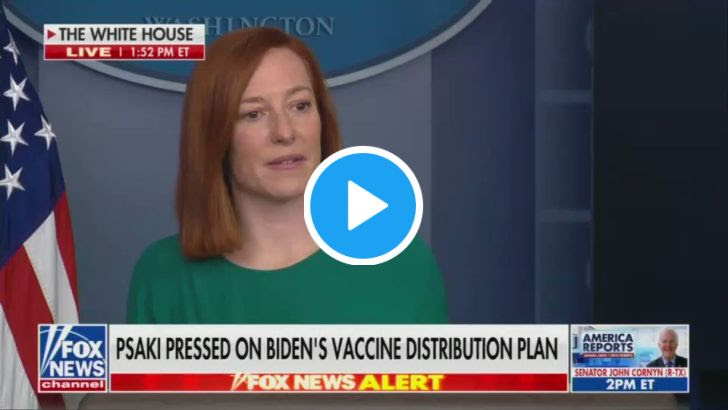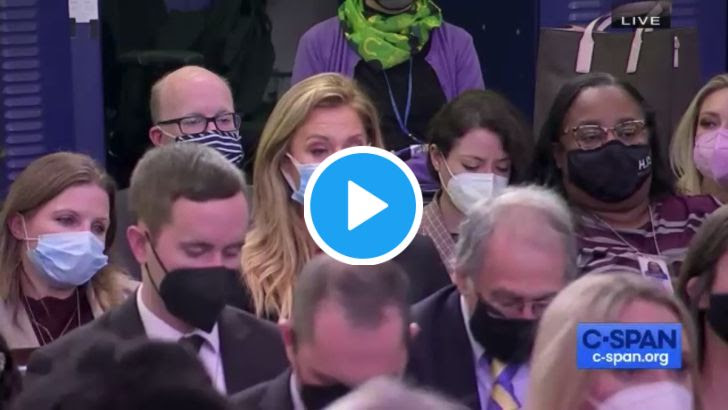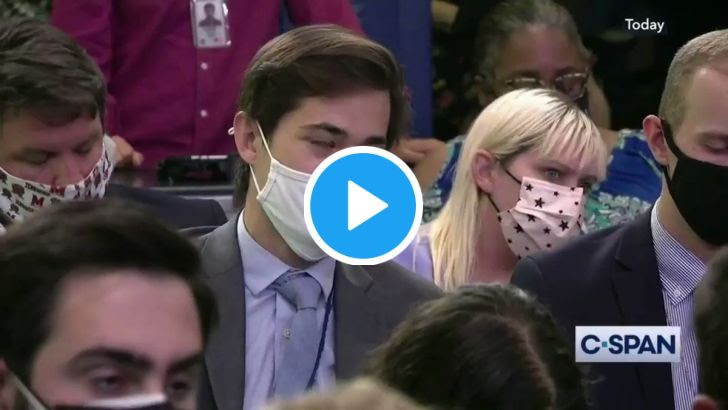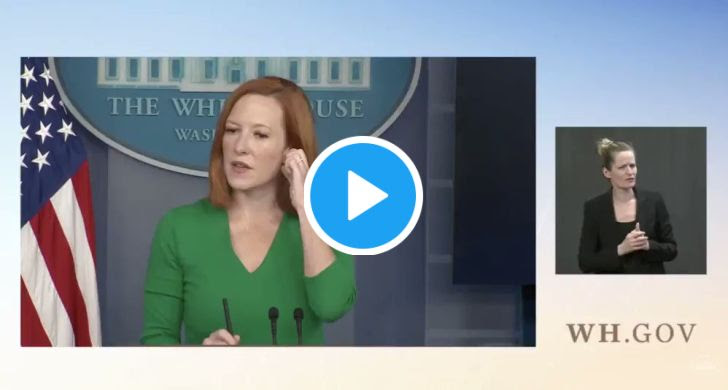

The left’s rhetorical war on women and white people has infested the “objective” field of medicine and is escalating to absurd lengths.
In the latest salvo, the clownish chief medical officer of New York City referred to pregnant women as “birthing people” and specifically marginalized white moms with this dehumanizing designation.
Dr. Michelle Morse is New York’s first “chief medical officer,” and she was specifically chosen for this new post because of her focus on pushing “racial equity.”
That’s PC speak for “whatever helps black people.”
“Dr. Morse’s experience has combined the best of public health, social medicine, anti-racism education, and activism,” Health Commissioner Dr. Dave Chokshi said in a February 2021 news release announcing her appointment.
“Health equity requires leaders who propel change and I am grateful that she has joined the Department to help us create a healthier, more equitable, city,” Chokshi said.
On Wednesday, Morse made the case for taxpayer-funded doulas (that’s like a midwife without the health care training) targeting pregnant black and brown women.
The far-left activist claimed minority women need free doulas because the mortality rate of black mothers in New York is higher than for white moms.
Naturally, Morse blamed this alleged disparity on sham systemic racism and not on the post- and pre-birth health habits of white vs. black mothers.
In her bizarre tweets, she specifically referenced “Black and Puerto Rican mothers” while dismissing white moms as “non-Hispanic White birthing people.”
“Mortality rates of birthing people are too high, and babies born to Black and Puerto Rican mothers in this city are three times more likely to die in their first year of life than babies born to non-Hispanic White birthing people,” Morse said.
Too many NYC families experience life-threatening complications from childbirth, and even loss of life of the birthing person or their child. We must hold ourselves and health care delivery organizations accountable to our anti-racism mission and make health equity a realty.
— Dr. Michelle E. Morse (@NYCHealthCMO) March 23, 2022
The urgency of this moment is clear. Mortality rates of birthing people are too high, and babies born to Black and Puerto Rican mothers in this city are three times more likely to die in their first year of life than babies born to non-Hispanic White birthing people.
— Dr. Michelle E. Morse (@NYCHealthCMO) March 23, 2022
Numerous Twitter users slammed Morse for her degrading categorization of pregnant women as “birthing people.”
The chief medical officer of New York City thinks men can give birth. https://t.co/ftjfrpstUs
— Joshua Sharf (@joshuasharf) March 25, 2022
Birthing people https://t.co/7pUC7CxjI7
— ELIJAH (@ElijahSchaffer) March 25, 2022
Many also called Morse out for her shady dig at white moms.
White Mothers are called ‘birthing people’ and black and Puerto Rican Mothers are called Mothers? Your license to practice medicine should be revoked.
— Kimberly Morin (@Conservativeind) March 24, 2022
Interesting that Black and Puerto Rican people have mothers while the rest of us, especially the whites, get the birthing people treatment.
More seriously these clowns cannot even keep to their garbage. Please abort yourselves. https://t.co/1uy9gGMIPK
— Professional Contrarian (@Del_J123) March 25, 2022
Why are blacks and Puerto Ricans called “mothers” but whites are called “birthing people?” https://t.co/mhtocudwuH
— Olivia Rondeau 🇺🇸 (@rondeaulivia) March 24, 2022
She carefully says White birthing people. Black and Latino mothers.
And not Black and Latino birthing people. White mothers.
Another load of crap. https://t.co/gbhnRYAOm1
— Kelly Robinson (@kelrobi11) March 25, 2022
Morse’s racist tweets promoted New York Mayor Eric Adams’ multimillion-dollar, taxpayer-funded program to provide free doulas in 33 minority neighborhoods.
Giving birth should be healthy and safe for every single New Yorker, regardless of race.
We’re bringing the Citywide Doula Initiative to families in 33 neighborhoods for free and partnering with all 38 public and private birthing facilities on our Midwifery Initiative. pic.twitter.com/oZoPnBxbRM
— NYC Mayor’s Office (@NYCMayorsOffice) March 23, 2022
In a news release Wednesday, Adams — who once mocked white cops using the racial slur “crackers” — said the program was part of an effort to help black and Hispanic mothers.
“All three initiatives are part of Mayor Adams’ mission to reduce health inequities in New York City, particularly amongst marginalized Black and Latino/a families and pregnant people,” the release said.
“Maternal and infant health inequities are rooted in generations of structural racism and disinvestment,” it said.
“In New York City, Black women are nine times more likely to die of a pregnancy-related cause than white women, and their rate of infant mortality is more than three times higher. For Puerto Ricans, the infant mortality rate is twice that of white New Yorkers.”
While many Americans are struggling with soaring grocery and gas prices, some of our tax dollars are being used to help only certain groups under racist Democratic leadership.
A birth doula remains with the mother during birth, offering relaxation and breathing technique support, as well as comforting services like massage, and assistance with labor positions; however, doulas are not medically trained, and cannot deliver babies. A doula is not a substitute for having a woman’s partner at the birth. Doulas encourage participation from the partner, and offer support and reassurance to the partner as well.
https://www.medicinenet.com/doula_vs_midwife/article.htm
Comment: so these non-medically trained people are going to lower mortality rates how?






 March 23, 2022
March 23, 2022 


























 Curtis Houck @CurtisHouck
Curtis Houck @CurtisHouck
 Acyn @Acyn
Acyn @Acyn
 Tommy moderna-vaX-Topher @tommyxtopher
Tommy moderna-vaX-Topher @tommyxtopher
 Aaron Rupar @atrupar
Aaron Rupar @atrupar

 The First @TheFirstonTV
The First @TheFirstonTV

 Maha Rushie @RushieMaha
Maha Rushie @RushieMaha
 The Post Millennial @TPostMillennial
The Post Millennial @TPostMillennial


 Rapid COVID tests have proven to be a complete disaster.
Rapid COVID tests have proven to be a complete disaster.